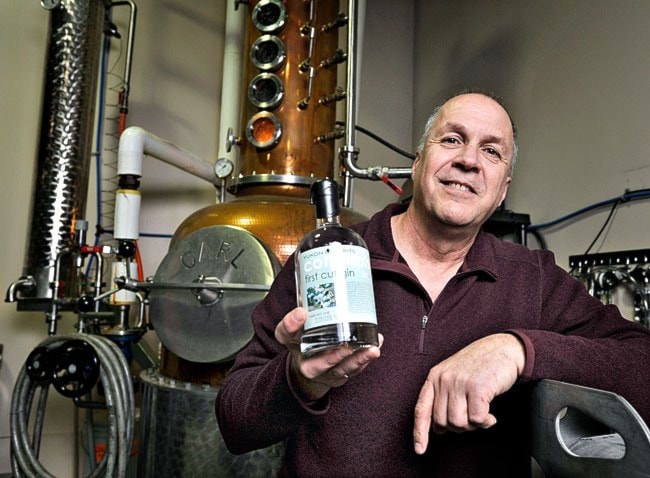The concoction that eventually becomes gin starts out as something a little less lively.
So when the folks at Yukon Brewing’s offshoot, Yukon Spirits, began considering the recipe for their newest foray into libation creation, everyone gathered around for a taste test - of tea.
When making gin, the first step is deciding which flavours to infuse in the alcohol, explained co-owner Bob Baxter. The easiest way to do that is to test how all the ingredients work as tea.
“I couldn’t have told you what orris root tastes like,” he said.
“We made a tea with orris root and all of these different ingredients that our research shows were potential builders of gin.”
Gins can be infused with just about anything. There are popular versions on liquor store shelves made with cucumbers or rose petals.
Baxter won’t give away specifics of the nine different ingredients in the Yukon blend, which went on sale last week. Those combinations are trade secrets.
The central ingredient though, came from close to home.
Gin is always made with juniper. About 20 per cent of the berries in Yukon Spirits’ First Cut gin were hand-picked this fall from shrubs on the edge of Kluane National Park.
Baxter said the team wasn’t able to get their hands on enough Yukon berries to make the batch completely out of local product. The rest had to be bought commercially.
Juniper has to develop for three seasons before it is the right colour and flavour to be used in gin.
“We found lots that were the wrong colour, the year one colour and the year two colour, but not so many that were the year three colour,” Baxter said.
Few people would choose to chomp down on a raw juniper berry. Their flavour has been described as piney, fruity and peppery.
The wild Yukon variety is even more intense than their commercially-bought brethren. So being forced to combine the two varieties may have actually been serendipity, he said.
The Yukon-grown berries “were a lot more bitter, a lot more intense. A little bit of a woody flavour to them that the commercial ones didn’t have.”
Once the team thought they had a good idea of what flavours they wanted to combine, the recipe made the move from tea to alcohol in a miniature still heated by a small Bunsen burner.
“It’s really what a high school teacher would demonstrate distilling to his class on,” Baxter said.
Once that tiny taste got the seal of approval, it was on to the bigger equipment.
The tea bag was replaced with a game bag, but the process didn’t change that much. Some of the ingredients went into the bag and others were thrown directly into the alcohol to infuse. The liquid was heated to different temperatures and combined to become the final product.
First Cut was split into 660 numbered 500-ml bottles. Each costs $34.
“We got a flavour that I think is pretty complex and layered. And that’s what we were after, something that wasn’t simple,” Baxter said,
“If you want simple there’s lots of simple gins out there. We wanted something that showed off some of that what we think is the local juniper character coming through.”
Baxter said they called the gin First Cut for a reason. A second cut is always a possibility.
Now that they’ve learned the basics of gin making, it’s easier to consider playing around with other things that grow naturally in the Yukon, he said.
That could mean anything from sage to buffalo grass, he said.
“They’re all potential candidates because they all contribute certain flavours that may or may not taste good in a final product.”
Aside from gin, Yukon Spirits continues to work on its first attempt at whiskey.
The whiskey is “delicious, but not ready yet,” Baxter said.
The plan is to release the first batch of whisky in February.
Contact Ashley Joannou at
ashleyj@yukon-news.com
